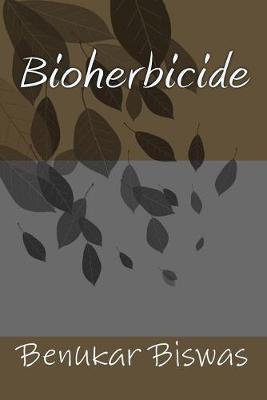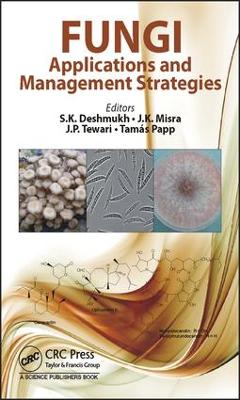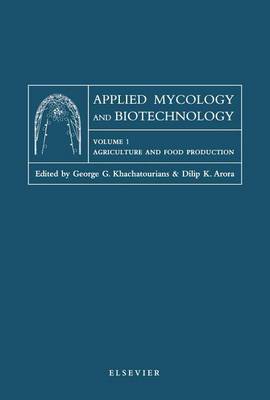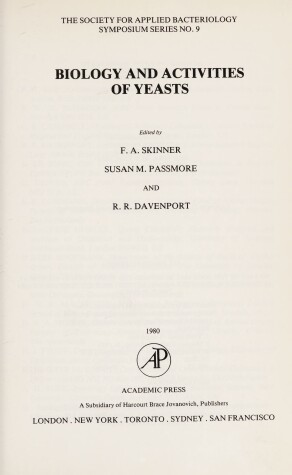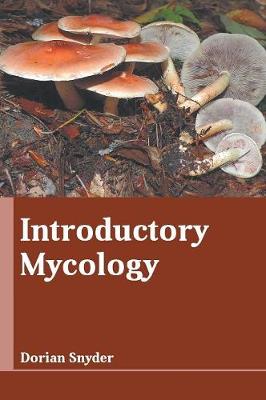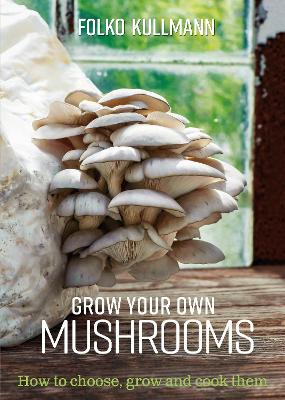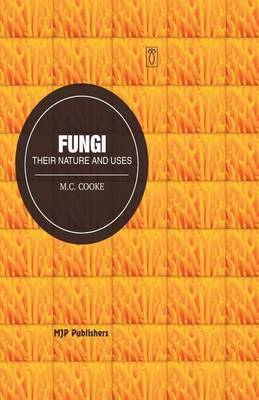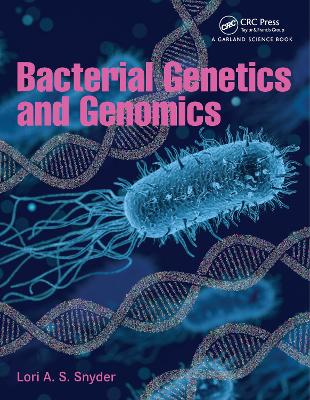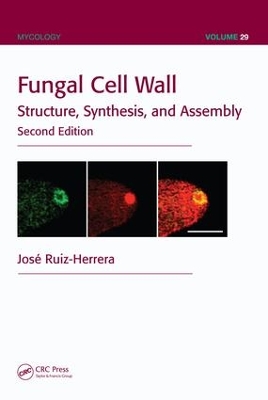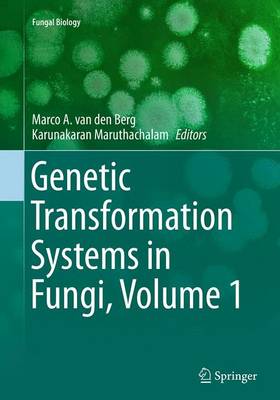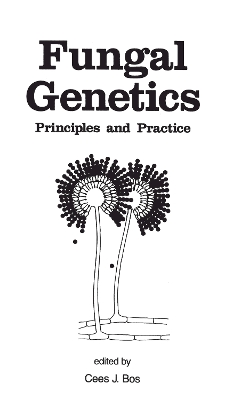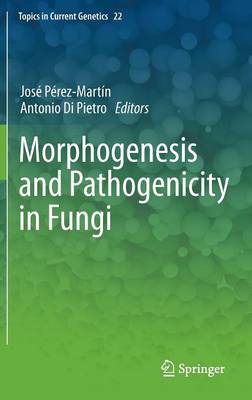Fungi (Progress in Mycological Research)
The book deals with the application of fungi and the strategic management of some plant pathogens. It covers fungal bioactive metabolites, with emphasis on those secondary metabolites that are produced by various endophytes, their pharmaceutical and agricultural uses, regulation of the metabolites, mycotoxins, nutritional value of mushrooms, prospecting of thermophilic and wood-rotting fungi, and fungi as myconano factories. Strategies for the management of some plant pathogenic fungi of rice an...
Agriculture and Food Production (Applied Mycology and Biotechnology, #1)
This volume of Applied Mycology and Biotechnology completes the set of two volumes dedicated to the coverage of recent developments on the theme "Agriculture and Food Production". The first volume provided overview on fungal physiology, metabolism, genetics and biotechnology and highlighted their connection with particular applications to food production. The second volume examines various specific applications of mycology and fungal biotechnology to food production and processing. In the second...
Biology and Activities of Yeasts
The Neurospora Compendium
by David D Perkins, Alan Radford, and Matthew S Sachs
The fungi have been major players in the molecular revolution that has transformed biology. Because they can be manipulated as microorganisms, yeast and Neurospora provide information that is difficult to acquire with plants and animals, and experimental findings with fungi often throw light on corresponding processes in plants and animals. The filamentous fungus Neurospora crassa has become a valuable model organism because of its favorable features for genetic analysis and because of the vast...
Handbook of Food Microbiological Analytical Methods
by Ismail Mohamed Al Bulushi
THE Handbook of Food Microbiological Analytical Methods includes 31 topics and experiments distributed throughout five chapters, namely basic microbial skills, the enumeration of different microorganisms in foods, identification techniques and determination of microbial activities. Besides, the handbook includes useful sources in food microbial analyses such as the Food Microbiology E-sources and the primers for identification of common microbial pathogens. This handbook aims to provide and deve...
Grow delicious edible mushrooms indoors or outdoors, in your garden or on your balcony, and enjoy them fresh throughout the year. This practical book explains how to grow fungi, with easy-to-understand instructions: Methods and growing-media for indoors and outGetting your mushrooms started and caring for themHow to harvest, store, and preserve your mushrooms all year roundIn-depth descriptions of the most popular varieties This beautifully designed book is the perfect introduction to mushrooms...
Yeast Gene Analysis (Methods in Microbiology)
by Ian Stansfield and Mike Stark
Focusing on Saccharomyces cerevisiae, the second edition of Yeast Gene Analysis represents a major reworking of the original edition, with many completely new chapters and major revisions to all previous chapters. Originally published shortly after completion of the yeast genome sequence, the new edition covers many of the major genome-wide strategies that have been developed since then such as microarray analysis of transcription, synthetic gene array studies, protein microarrays and chemical g...
Methods in Yeast Genetics
by Chris Kaiser, Susan Michaelis, and Aaron Mitchell
Working with Mycorrhizas in Forestry and Agriculture (ACIAR Monographs, No 32)
by M. Brundett, N. Bougher, B. Dell, T. Grove, and N. Malajczuk
Mycorrhizas are highly evoloved mutualistic associations between the soil fungi and plant roots. The partners in the association are members of the fungus kingdom and most vascular plants. This manual explains procedures used by scientists who work with mycorrhizal fungi and roots in the laboratory, nursery, or natural and managed ecosystems. Many of the techniques use readily obtainable and relatively inexpensive equipment and chemicals.
Designed as a resource for botanists and all those interested in fungi, and suitable for the general reader or student looking for background reading, the focus of this text is the larger fungi; those which have an obvious fruiting body. Roy Watling MBE, a respected mycologist who has written widely on the subject of fungi, sheds light on these intriguing organisms in a clear, accessible text illustrated with colour photographs on every page. In a world without fungi, all the fallen trees, dead...
Our understanding of bacterial genetics has progressed as the genomics field has advanced. Genetics and genomics complement and influence each other; they are inseparable. Under the novel insights from genetics and genomics, once-believed borders in biology start to fade: biological knowledge of the bacterial world is being viewed under a new light and concepts are being redefined. Species are difficult to delimit and relationships within and between groups of bacteria – the whole concept of a t...
Fungal Cell Wall: Structure, Synthesis, and Assembly, Second Edition is a compendium of information on the chemical structure, synthesis, and organization of the cell wall of fungi. Reviewing the past 20 years of research in the field, it discusses experimental evidence that demonstrates the role of the cell wall in the growth, development, morphog
Genetic Transformation Systems in Fungi, Volume 1 (Fungal Biology)
Several different transformation techniques have been developed over the years and readily shown to be decisive methods in fungal biotechnology. This book will cover the basics behind the most commonly used transformation methods, as well as associated tools and techniques. Each chapter will provide protocols along with examples used in laboratories worldwide. Not only will this text provide a detailed background on applications in industrial and pharmaceutical relevant microbes, but also the...
Fungal Genetics (Mycology, #13)
This is a concise guide to the combined use of classical and molecular methods for the genetic analysis and breeding of fungi. It presents basic concepts and experimental designs, and demonstrates the power of fungal genetics for applied research in biotechnology and phytopathology. Case studies of Saccharomyces cerevisiae, Candida albicans, Aspergillus niger, Neurospora crassa, Podospora anserina, Phytophthora infestans and others are included.
Morphogenesis and Pathogenicity in Fungi (Topics in Current Genetics, #22)
Infectious fungal diseases continue to take their toll in terms of human suffering and enormous economic losses. Invasive infections by opportunistic fungal pathogens are a major cause of morbidity and mortality in immuno-compromised individuals. At the same time, plant pathogenic fungi have devastating effects on crop production and human health. New strategies for antifungal control are required to meet the challenges posed by these agents, and such approaches can only be developed through the...
Yeast Genetic Networks (Methods in Molecular Biology, #734)
Regulation of gene expression, a major determinant of gene activity, occupies a central place in molecular biology. Yeast Genetic Networks: Methods and Protocols covers approaches to the systems biological analysis of small-scale gene networks in yeast. Divided into four convenient sections, this detailed volume discusses the methods used to analyze gene expression quantitatively, presents a collection of mathematical and computational tools to analyze stochasticity, adaptation, sensitivity in s...
Hidden in the leaf litter and other moist, shady places of woodlands and gardens lives a remarkable group of organisms. Myxomycetes - A Handbook of Slime Molds introduces observers to the lives of these organisms, which are distinguished by a cycle of changes that are quite beautiful, if often in miniature. Myxomycetes have some characteristics in common with the true molds or fungi, most noticeably the production of colorful spore-producing structures. But their affinity with other, more "primi...
